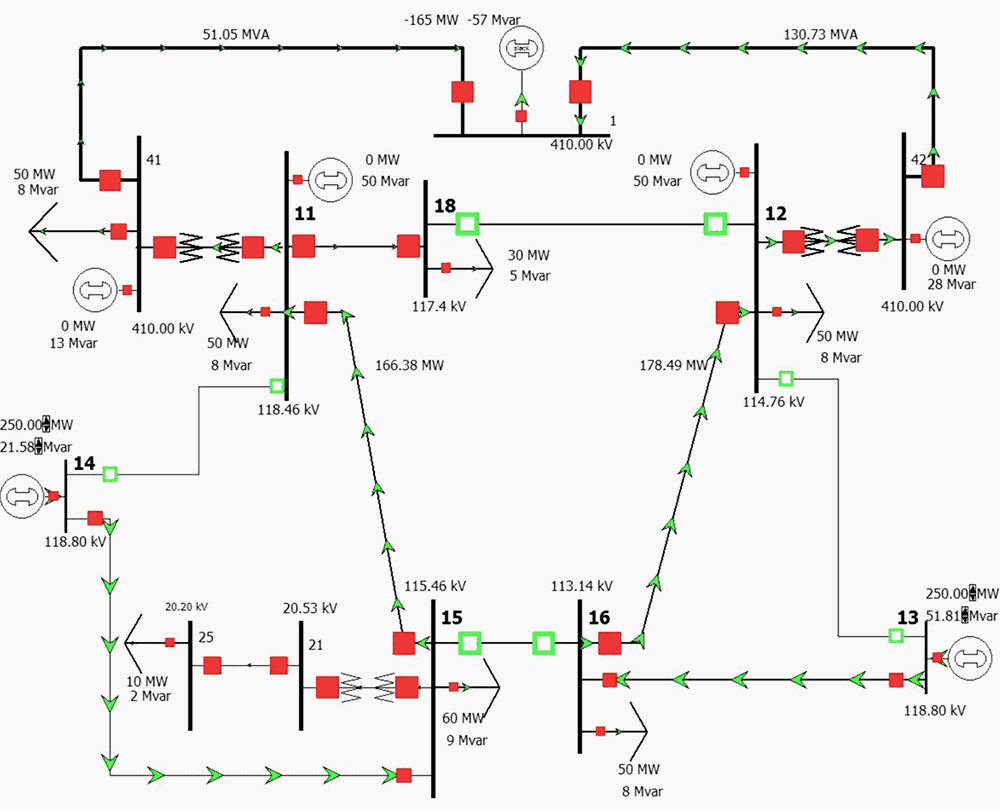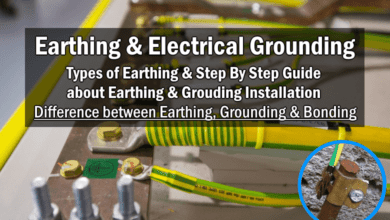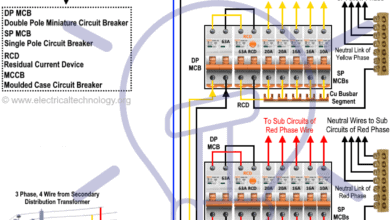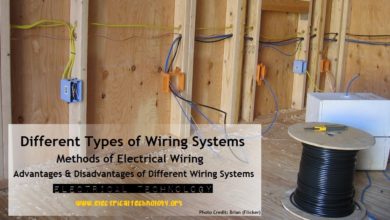Electrical Transmission Networks – EHV and HV Overhead Lines
Electrical Transmission Networks and Overhead Lines
Generally, EHV and HV (High Voltage; 60 kV ≤ V < 150 kV, EHV: Extra High Voltage; V ≥ 150 kV) is used for energy transmission to decrease the current in the line, what allows the reduction of the cross section of conductors and losses by Joule effect ( Joule law: W = RxI2xt = UxIxt, where “ t ” is the time ).
Transmission networks have their origin in power stations and substations and they are usually composed by overhead lines, but in urban areas underground insulated cables must be used.
EHV and HV overhead lines are basically constituted by:
- Metallic towers
- Insulators
- Conductors
- Corona rings
- Earthing connections
Related Post: All About Electrical Protection Systems, Devices And Units
Common conductors types used in overhead lines are ACSR ( aluminium conductor steel-reinforced ), according to standards EN (European Standards)50189, 50889, 61232 and 50182,and aluminium alloy conductors ( AAAC – all aluminium alloy conductors cables) designated as AL2, AL3, AL4 and AL5, according to standards EN 50182 and 50183.
Power transmission equipments are designed to minimize the formation of corona discharge and coronas can be suppressed by toroid devices (corona rings), shown in Figure 1, that are used to spread the electric field over larger area and decrease the field gradient below the corona threshold.
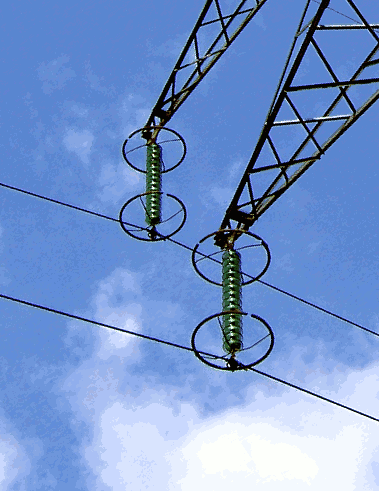
One of the causes of overhead lines is lightning, to which they are subjected all along their run, requesting additional protection to the one provided by surge arresters at substations.
“Lightning aerial protection wires” are installed along the run of overhead line to achieve this protection, being OPGW (Optical Power Ground Wire) cables commonly used.
An OPGW cable contains a tubular structure with one or more optical single-mode optical fibers in it, surrounded by layers of steel and aluminium wire.
The conductive part of the cable serves to bond adjacent towers to earth ground, and shields the conductors from lightning strikes. The optical fibers within the cable can be used for high-speed transmission of data, either for the electrical utility’s own purposes of protection and control of the transmission line, for the utility’s own voice and data communication.
The optical fiber itself is an insulator and protects against power transmission line and lightning induction, external noise and cross-talk.
Optical fibers have low transmission loss, allowing long distance transmission at high speeds.
Figure 2 shows an example of an OPGW cable.
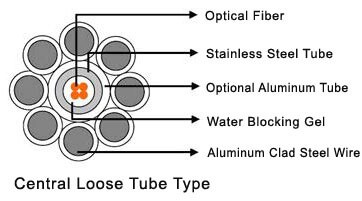
Also Read: Cables Feeder Protection – Faults Types, Causes & Differential Protection
In some countries, typically for voltage level of 72.5 kV, in older overhead lines, this protection is only installed in the first 4 or 5 spans close to substations, using ACSR cables, solution abandoned nowadays, since OPGW cable is also used for data communication between substations.
Insulated cables are usually XLPE (Cross linked polyethylene) insulated, with aluminium conductors and single phase.
EHV and HV transmission networks have commonly a “ring” configuration with an important complexity, as shown in Figure 3.
